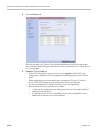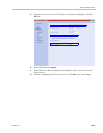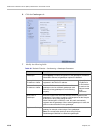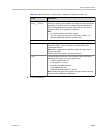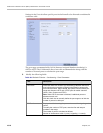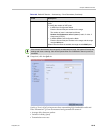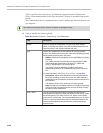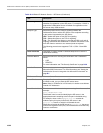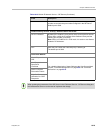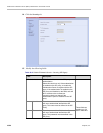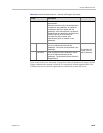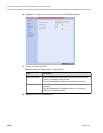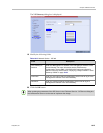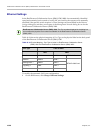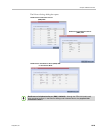
RealPresence Collaboration Server (RMX) 1500/2000/4000 Administrator’s Guide
16-22 Polycom, Inc.
Refresh Registration This defines the time in seconds, in which the Collaboration Server
refreshes it’s registration on the SIP server. For example, if “3600” is
entered the Collaboration Server will refresh it’s registration on the
SIP server every 3600 seconds.
Transport Type Select the protocol that is used for signaling between the
Collaboration Server and the SIP Server or the endpoints according
to the protocol supported by the SIP Server:
UDP – Select this option to use UDP for signaling.
TCP – Select this option to use TCP for signaling.
TLS – The Signaling Host listens on secured port 5061 only and all
outgoing connections are established on secured connections. Calls
from SIP clients or servers to non secured ports are rejected.
The following protocols are supported: TLS 1.0, SSL 2.0 and SSL
3.0.
Create Certificate This button is used to create a Certificate Request to be sent to a
Certification Authority.
Certificate Method Select the method for sending the Certificate to the Collaboration
Server:
• CSR
• PEM/PFX
For more information see "The Security Certificate” on page H-39.
Send Certificate This button is used when Integrating the Collaboration Server into the
Microsoft OCS Environment. For more information, see "Setting the
Collaboration Server for Integration Into Microsoft Environment” on
page H-1.
SIP Servers: Primary / Alternate Server Parameter
Server IP Address Enter the IP address of the preferred SIP server.
If a DNS is used, you can enter the SIP server name.
Note: When in IPv4&IPv6 or in IPv6 mode, it is easier to use Names
instead of IP Addresses.
Server Domain Name Enter the name of the domain that you are using for conferences, for
example:
user_name@domain name
The domain name is used for identifying the SIP server in the
appropriate domain according to the host part in the dialed string.
For example, when a call to EQ1@polycom.com reaches its
outbound proxy, this proxy looks for the SIP server in the
polycom.com domain, to which it will forward the call.
When this call arrives at the SIP server in polycom.com, the server
looks for the registered user (EQ1) and forwards the call to this Entry
Queue or conference.
Table 16-10 Default IP Network Service – SIP Servers (Continued)
Field Description



